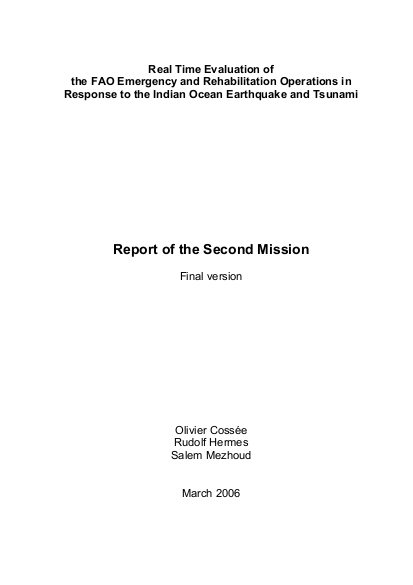
The unprecedented emergency caused by the December 2004 Tsunami in South and Southeast Asia provoked an equally unprecedented response from the International Community and the UN. The magnitude of the support mobilized calls for particular attention to ensure efficient and effective use of resources. FAO decided to experiment with a new evaluation approach called “Real Time Evaluation”, consisting of a series of light, interactive evaluative exercises. Based on a short desk study of the FAO tsunami response, PBEE and TCE selected a sample of three countries (Indonesia, Sri Lanka and Thailand) and planned to send to this sample three evaluation missions staged at the beginning, middle and end of the response. The first mission took place in May 2005. It mainly focused on operational procedures, operations and disaster preparedness, damage assessments and programme planning. The second mission was conducted in November-December 2005, and coincided with the end of field surveys conducted by national consultants and surveyors under a methodology called Beneficiary Assessments. The third mission, originally planned for early 2006, might be postponed to June 2006. The second RTE mission, which is the subject of the present report, mainly focused on beneficiary selection, beneficiary satisfaction and preliminary indications of impact. It also revisited some of the issues raised by the first RTE mission (lack of operational readiness of the Organization, bias towards input delivery, notion of “disconnect” between FAO departments). In addition, the Livelihood Support Programme supported the hiring of a livelihoods specialist to review ways and means of integrating the sustainable livelihoods approach in the tsunami response, and more generally in FAO emergency operations.